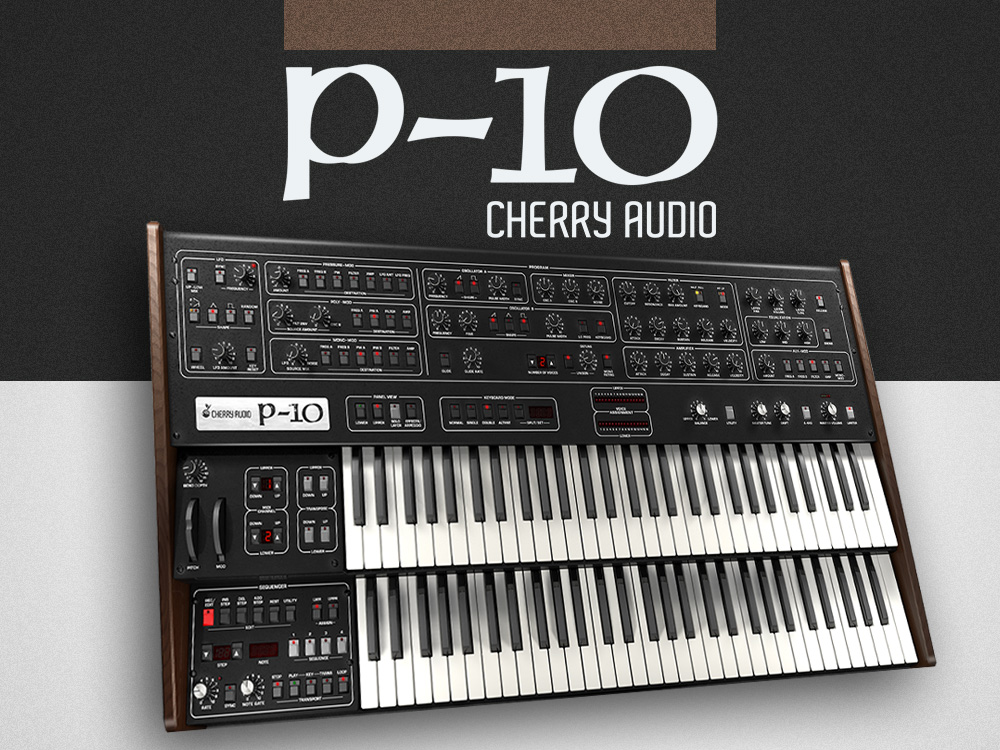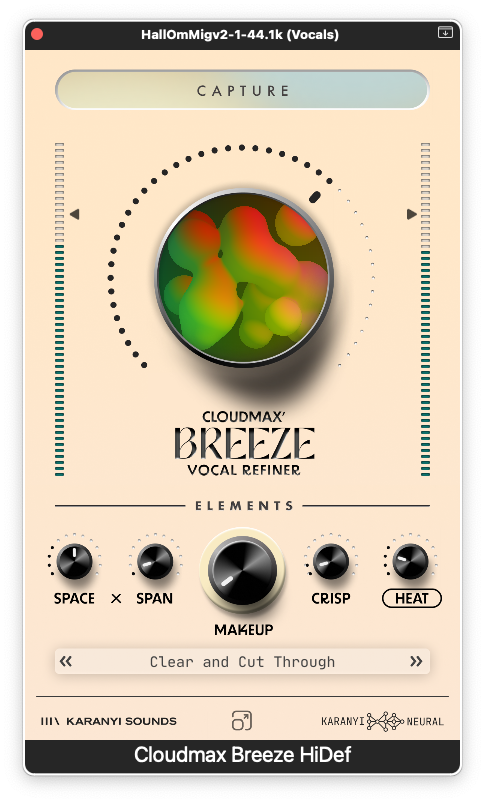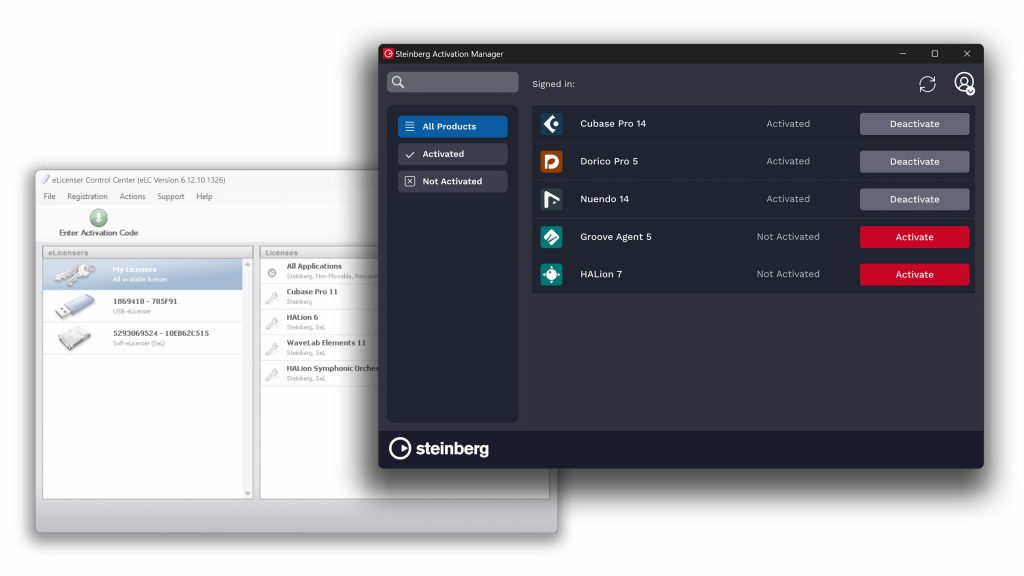
Software Review
A prophet in your own country … and everyone else’s
I’ve always been interested in synthesizers, perhaps significantly more than what should be practical; after all I’m first and foremost a guitarist. Anyway I’ve owned almost all of Roland’s MKS series rack synthesizers, two Oberheims, an Akai and an EMU sampler, plus a bunch of other old favorites. On the software side, it’s been almost as bad, but now I have a new favorite, the Cherry Audio P-10.
In modern synth history, there are some machines that have reached, and maintained, their cult status long after they were introduced. The Minimoog is of course such a machine, the DX-7 another, and then of course we have Roland’s Jupiter series and my own favorite among Roland synthesizers, the Super JX, or MKS-70 as it was called in rack format. But then there was a synth that became a real classic already during its lifetime, the Sequential Circuits Prophet-5. It also had a big brother in the form of the Prophet-10. It is this sibling that Cherry Audio has now created a software version of and they just call it the P-10.
Prophet 10
Dave Smith was 28 years old when, together with John Bowen, he designed one of the most beautiful-sounding of all analog, polyphonic synthesizers ever, the Prophet-5. It was a huge success and soon the typical Prophet-5 sound could be heard on lots of hits from all over the world. But apart from the magical sound, the P-5 had a lot of other unique advantages. The most important was probably that it was the first polyphonic synthesizer that was also programmable, thanks to the newly designed micro-chips. This meant that you could save your sound creations and recall them when you needed them without having to dial them up again “from scratch”.
The big ear-opener was of course the sound from these synthesizers. They had a fat and very organic sound, thanks in large part to the excellent filters. And it would get even fatter… In 1981, Sequential Circuits released the twice as powerful Prophet-10. It had two sound-generating cards of the variant that the five had, and that meant twice as much of everything. That meant 10 voices with 20 of Sequential’s analog VCOs, that means 2 per voice, and of course it sounded wonderfully fat. However, the first version had problems with both overheating and instability in tuning, partly due to the fact that the manufacturer continued to use the same small chassis as the fifth, while also stuffing even more electronics into the box. From the outside it therefore looked exactly like its little brother P-5.
The next version got a larger chassis and also two keyboards, and that is the image we now associate with the Prophet-10. Furthermore better chips were developed that held the tuning better. Revision 1 and 2 of the Prophets used oscillators and filter chips from SSM (Solid State Microdevices). These had a fatter sound, but were not as stable as the later ones in rev 3, where CEM (Curtis Electronics Manufacturing) was the manufacturer.
The P-10 also had a built-in “poly sequencer” and all this together made it an enormously popular synth during the 80s and well into the 90s. It has been used with great success by artists and groups such as
Tangerine Dream, The Orb, The Who, Pet Shop Boys, Vangelis, Genesis, Human League, Duran Duran, Kraftwerk, Pink Floyd, film composer John Carpenter and many more.

Cherry Audio P-10
With its P-10, Cherry Audio has tried to emulate in every detail the sounds that made the original one of the most iconic of all the analog polyphonic synthesizers. This has meant that to begin with, they offer all presets from both P5 and P10. But this is not enough – development has progressed on so many levels since then.
The developers have made a lot of considerate updates and thus modernized the whole experience of playing a software synthesizer at its best. The Cherry Audio P-10 has 16-voice polyphony per layer, a 4-track step sequencer, velocity sensitivity, polyphonic after-touch and a keyboard split function. To this Cherry Audio has also added extremely advanced modulation functions and an extra panel with an arpeggiator and a complete effects section for each layer. And when it comes to the modulation possibilities… There is just as much here as you could want. A variation that impressed me greatly was the innovative Poly Mod variation where you have individual modulation paths for each synth voice. Caramba!
And it is clear that if you want to create a software synth that will emulate one of the most interesting analog polysynths ever, you as a developer really have to pull yourself together. And this is what Cherry Audio has actually succeeded in doing.
So what does the Cherry Audio P-10 offer?
We have already touched on some of the interesting things that the developers have put into the P-10. It should of course also be emphasized that Cherry Audio has been extremely serious when it comes to emulating every small component, every nuance of the classic Prophet sound. Everything from the typical characteristics of the Curtis 3340 oscillators and 3320 filters, to the inimitable, raw sound of the original oscillator sync.
The Cherry Audio P-10 is also one of the most versatile software synthesizers I’ve seen in a long time. You can use the P-10 as two independent synthesizers – yes, you can control both keyboards from separate MIDI controllers – in order to play two great sounds on top of each other, split the sounds on each part of your controller keyboard, and even let the P-10 alternate between two layers for each keystroke you make. You can also have completely separate settings for all parameters in each layer; this also applies to arpeggios and effects. Do I need to continue?

Well, maybe a few words about the exquisite graphical interface could be in order. It is of course completely scalable, and if you don’t need to see the keys, just click on “Hide Keyb”. The fact that you can also use it as a standalone app is of course very appealing to those who want to sit and tinker and work on their own sounds without having to start a DAW. You can even play the P-10 via the regular QWERTY keyboard – a feature that it shares with other instruments in Cherry Audio’s large catalog.
The extensive range on the modulation side is unparalleled in my part of the synth world. There I leave it up to you to try yourself out. There is also a really well-written user manual to download from the developers’ website. Comes recommended together with the 30-day trial version.
And I almost forgot another important detail… The developers have added a so-called Drift Control that gives oscillators and filters a certain analog feel by changing them slightly over time. You decide for yourself how much.
On the effects side, we find two independent studio-quality effect sets, where the effects can be run globally or in two-layer mode. There we find distortion, phaser (4-, 6- or 12-step variant), flanger, chorus, three variants of delay with sync option, and five different reverbs. Awesome!
And you know what? You can even import patch banks in SysEx format from both P5 and P10 via the drag-and-drop method. Thank you very much!
And it sounds absolutely amazing
The first time I had the opportunity to try a minimoog I was terribly disappointed. No matter how I turned all the knobs, it just whistled, hissed and just sounded odd. But that was a long time ago. Later the Prophet 5 with its ready-made sounds appeared, and since then the sky’s been the limit. But even today, the preset sounds are very important for selling a new instrument. This applies to both hardware and software. I would even like to stress the point and say that no software instrument is better than its presets/factory settings. That’s where you form your first impression of an instrument. And as some wise man once said: You only get one chance to create a first impression.
When it comes to the Cherry Audio P-10, they have really taken this fact into account. The instrument is supplied with more than 500 really good factory settings, and includes the original presets from both the P5 and P10! In addition, it is easy to search through all the wonderful sounds via the excellent preset browser, which is logically and intuitively sorted. Among this multitude of preset sounds, you will find things that are ready to be placed in different layers, in splits, sounds for the built-in sequencer, ready-made arpeggios, effects, modulations and aftertouch. Yum!
If this isn’t enough, you can download an additional Preset Pack with 100 more sounds for $9.99, or why not dial in your own sounds? The Cherry Audio P-10 really invites you to do just that.

Conclusion
For those who yearn for real hardware, there is a newly developed physical version of the Prophet-10, and yes, Dave Smith is behind this as well, but it would cost you – a lot. More precisely, you will have to shell out around 5 thousand dollars if you feel like owning “The Real Thing”. With this in mind, the Cherry Audio P-10 seems even more of an obvious and irresistible choice. A price tag of 59 dollars is something that you probably have to classify as “irresistibly cheap” (MAD magazine used this as a selling point a long time ago). In terms of sound, it is a gold mine for those who want to delve into old original sounds from a bygone and beloved era. When it comes to features, the P-10 beats most, without straying too far from the original. Cherry Audio has once again really amazed me – and I think the rest of the music world is equally impressed. You can’t be anything other than that. Now I’m just waiting for an equally authentic version of my old stable-mate, the JX-10!
Links
History, sound demos, specifications, videos (Cherry Audio website):
https://cherryaudio.com/products/p-10
Videolänkar
Cherry Audio P-10 is presented:
Hear you can listen to some of the preset sounds:
Here’s a longer presentation:
And here’s the original from 1980:
FACTS & FIGURES
SYSTEM REQUIREMENTS
macOS: 10.13 or above; macOS 13 Ventura supported; 64-bit required Native Apple M1 or greater processor support, including Ultra; 3.4 GHz Quad-Core or M1 CPU with 8GB of RAM is recommended; Hard disk space: 104 MB
Windows: Windows 7 or later (including Windows 11), 64-bit; Quad-core computer with 8GB of RAM is recommended; 104 MB free harddisk space
An internet connection is required for product activation
FORMATS AU, VST, VST3, AAX and standalone
DEMO A free 30-day trial versio is available for download
DEVELOPER Cherry Audio
INFO https://cherryaudio.com/products/p-10
PRICE 59 dollar




